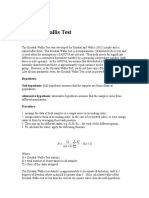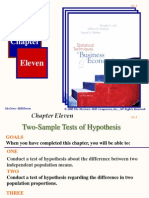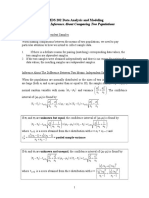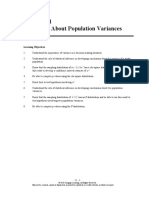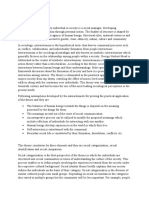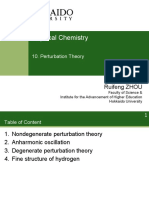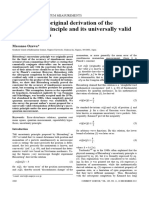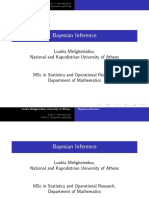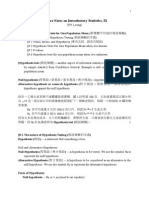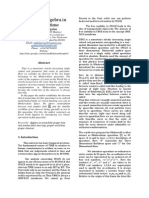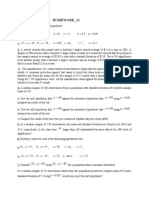0% found this document useful (0 votes)
143 views33 pagesAdvanced Econometrics (I) Chapter 9 - Hypothesis Testing Fall 2012
(1) The document describes hypothesis testing for comparing means of two populations using a t-test. It discusses four cases: two independent samples with known variances, unknown but equal variances, unknown unequal variances, and dependent paired samples.
(2) It provides an example comparing the alkalinity in upper and lower river reaches, calculating the test statistic and concluding the lower reach mean is higher than the upper at the 1% significance level.
(3) Another example compares daily sales at a bakery when windows are open vs. closed, assuming equal unknown variances.
Uploaded by
Keith MadrilejosCopyright
© © All Rights Reserved
We take content rights seriously. If you suspect this is your content, claim it here.
Available Formats
Download as PDF, TXT or read online on Scribd
0% found this document useful (0 votes)
143 views33 pagesAdvanced Econometrics (I) Chapter 9 - Hypothesis Testing Fall 2012
(1) The document describes hypothesis testing for comparing means of two populations using a t-test. It discusses four cases: two independent samples with known variances, unknown but equal variances, unknown unequal variances, and dependent paired samples.
(2) It provides an example comparing the alkalinity in upper and lower river reaches, calculating the test statistic and concluding the lower reach mean is higher than the upper at the 1% significance level.
(3) Another example compares daily sales at a bakery when windows are open vs. closed, assuming equal unknown variances.
Uploaded by
Keith MadrilejosCopyright
© © All Rights Reserved
We take content rights seriously. If you suspect this is your content, claim it here.
Available Formats
Download as PDF, TXT or read online on Scribd
/ 33



























